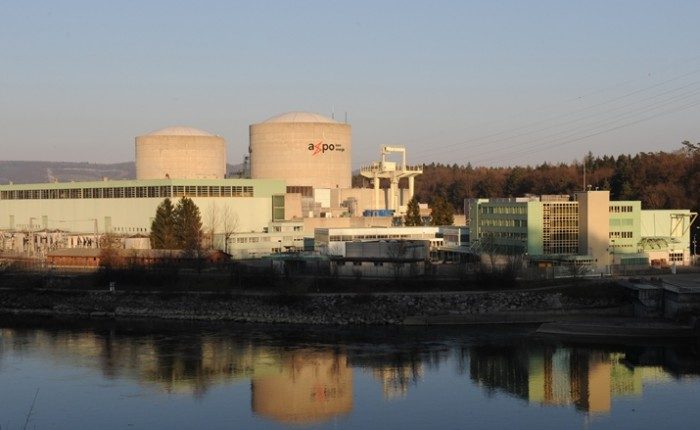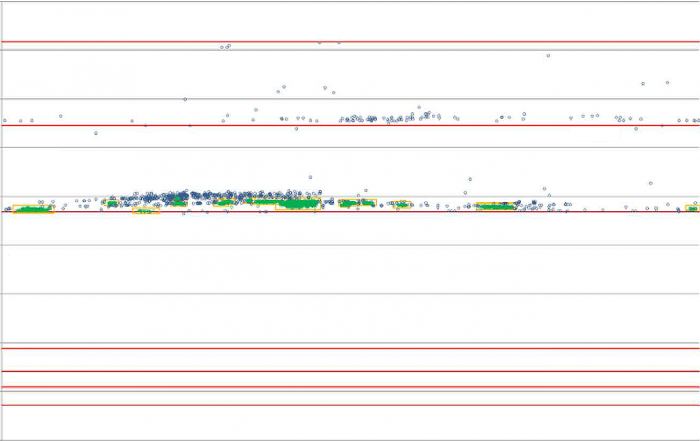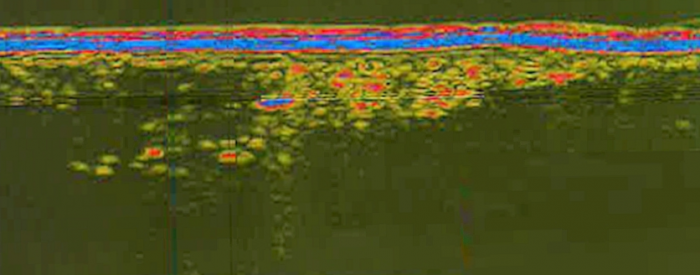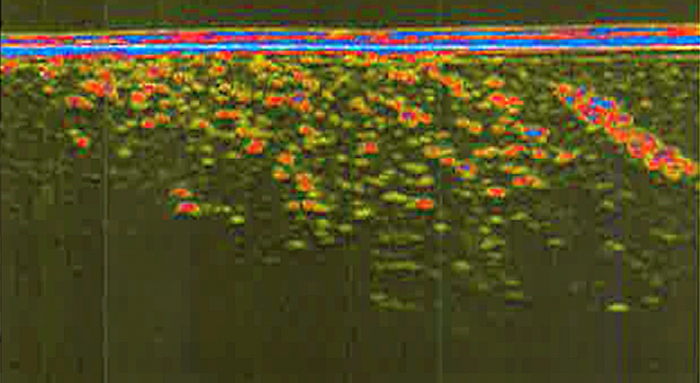Beznau 1: Aluminium oxide inclusions do not have a negative impact on reactor pressure vessel safety

Beznau 1 Nuclear Power Plant gets the go-ahead to start up again. Axpo has proved that the inclusions found in the steel of the reactor pressure vessel do not have a negative effect on safety. ENSI, the Swiss Federal Nuclear Safety Inspectorate, has reviewed and accepted the safety case.
The reactor pressure vessel is the most important component in a nuclear power plant and must not fail. Axpo was therefore required to demonstrate, in detail, that the findings discovered in the base material of the reactor pressure vessel of the Beznau 1 Nuclear Power Plant in the summer of 2015 did not have a negative effect on safety.
Axpo is has now provided this safety case, as demonstrated by ENSI’s review. The International Review Panel set up by ENSI in 2015 has reached the same conclusion. “We can therefore state, with confidence, that the reactor pressure vessel is safe,” said Hans Wanner, summarising the results. “From a safety viewpoint, there is no reason why Beznau 1 should not be put back into operation.”
International Review Panel
Soon after these findings came to light, ENSI set up an international team of experts, known as the International Review Panel (IRP), to assist with the assessment procedure. The regulator turned to internationally recognised experts with an in-depth knowledge of areas such as safety cases for reactor pressure vessel integrity, materials testing, fabrication of large forgings, and non-destructive testing methods.
The IRP experts reviewed the project plan and also considered Axpo’s analyses and assessments. Their role included assessing the results of non-destructive inspections materials tests, and structural and fracture mechanics analyses in the light of the detected findings.
Members of the International Review Panel (IRP)
- Tim Williams, 39bhr Limited (formerly Rolls Royce plc) (UK)
- Guy Roussel, Bel V (Belgium)
- Mark Kirk, US Nuclear Regulatory Commission NRC (USA)
- Hans Vandriessche, Vinçotte (Belgium)
- Hans-Jakob Schindler, Mat-Tec AG Winterthur (Switzerland)
- Randy Nanstad, R&S Consultants LLV (formerly Oak Ridge National Laboratory ORNL) (USA)
- Isabelle Delvallée-Nunio, Institut de Radioprotection et de Sûreté Nucléaire IRSN (France)
- Eberhard Roos, formerly of the Stuttgart University Materials Testing Institute/MPA (Germany) until 2016
Experts’ Profile
- Detailed knowledge of production and inspection requirements for heavy forgings under Swiss and/or US nuclear regulations, past and present
- Detailed knowledge of foundry and forging technology for reactor pressure vessel steels in the 1960s and the potential related material imperfections
- Detailed knowledge of heat treatment of reactor pressure vessel steels of the A508 series, both in the production process and with a view to reducing neutron embrittlement
- Ultrasonic testing (UT) of heavy clad forgings, sizing of real defects, and the possibilities and limitations of individual methods
- Ability to interpret ultrasound imaging for heavy clad forgings
- Detailed knowledge of the determination and evaluation of neutron-induced embrittlement behaviour of reactor pressure vessel steels, particularly those used at the time and with respect to imperfections
- Overview of the current state of science and technology in general, and detailed knowledge of flaw grouping rules for fracture mechanics analyses
- Fracture mechanics evaluation of material defects in reactor pressure vessel steels under enveloping accident conditions, PTS safety cases
Thorough investigation of the extent of findings
In 2015 ENSI asked Axpo to examine, characterise and assess the ultrasonic data showing these findings in the steel of the reactor pressure vessel. As a result, Axpo’s first move was to record the findings (UT indications) more accurately using a more detailed method. Overall, indications were recorded in the support ring (B 119) and in the upper core ring (C 3519). No findings were observed in the lower core ring D.

Axpo therefore concentrated its efforts on further analysis of ring C, which shows the largest number of indications and is closest to the core and is thus subject to the highest embrittlement of all parts of the reactor pressure vessel. It is also highly stressed in the event of a loss of coolant accident.
The ultrasound examination revealed that the findings were almost exclusively in the lower quarter of ring C, in some cases in clusters.
Findings identified as aluminium oxide inclusions
“As we are unable to take larger samples from the reactor pressure vessel itself to establish the cause of these ultrasound indications,” explains Georg Schwarz, “Axpo arranged for a copy of ring C to be made.” This replica ring was produced using the same manufacturing method as used to produce ring C for the Beznau 1 reactor pressure vessel back in the 1960s.


The ultrasound examinations on the replica showed a picture similar to the original ring C of the reactor pressure vessel. After performing metallurgical analyses on the replica material, Axpo was able to confirm that the ultrasound indications were caused by aluminium oxide inclusions.
Aluminium oxide inclusions do not have a negative impact on material properties
The safety case is based on the evidence that aluminium oxide inclusions do not have a negative impact on the material properties of the reactor pressure vessel and thus on safety. To prove that this is the case, Axpo performed materials tests on 130 samples under supervision by independent technical experts. These material tests showed that there was no difference between samples with aluminium oxide inclusions and those without.
For most areas in which findings were observed in ring C of the reactor pressure vessel, it was possible to use replica material with comparable ultrasound images (amplitude and density distribution of the indications) to prove that the nil ductility transition temperature is not affected. Only in the case of very few areas with higher amplitudes it was not possible to analyse a sufficient number of samples. These areas were conservatively substituted with postulated cracks and fracture mechanics analyses were carried out to assess whether or not these were acceptable.
Aluminium oxide does not have a negative effect on embrittlement
Axpo was also required to examine the local chemical composition of the steelin an extensive range of tests using microscopic methods. These were intended to rule out the possibility of concentrations of specific elements which are known to have a potential impact on radiation embrittlement.
No such concentrations came to light, neither in the immediate vicinity of the aluminium oxide inclusions, nor in the material between the inclusions. It was thus possible to demonstrate that aluminium oxide does not have a negative influence on radiation embrittlement.
Ring C still meets the requirements of the DETEC Shutdown Ordinance. The nil ductility transition temperature is above the limit value. The so-called Master Curve method is used to determine the nil ductility transition temperature. “This is a state of the art method which is accepted worldwide,” Georg Schwarz explains.
Master Curve Method
The Master Curve method is used to establish the fracture toughness of metal based on fracture mechanics tests. It is a modern method, used throughout the world, and one which is based on statistical and materials-mechanics principles. The tests are performed on compact tension specimen in which a pre-crack is formed by high cycle fatigue.During the instumented tensile test, a range of measurements are performed and the nil ductility transition temperature can then be calculated directly from these results.

